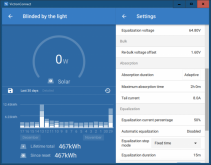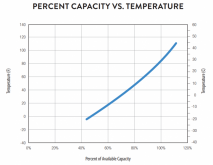chrisski
Solar Boondocker
- Joined
- Aug 14, 2020
- Messages
- 5,168
I am getting a battery voltage on my BMV-712 that is not matching the % remaining for my golf cart Flooded Lead Acid Batteries. My 150 AH consumed brings my percentage remaining down to 72% so that roughly matches up, but the battery voltage is 12.2, which is pretty close to the 50%.
My next step is to do some specific gravity readings to see where the batteries are at, because the only thing I see that could cause the readings I'm seeing is if my batteries are dying already. These batteries were purchased in July, Charged with a right sized 26 amp charger and kept on a float charger until I used them for about 10 days.
My next step is to do some specific gravity readings to see where the batteries are at, because the only thing I see that could cause the readings I'm seeing is if my batteries are dying already. These batteries were purchased in July, Charged with a right sized 26 amp charger and kept on a float charger until I used them for about 10 days.





